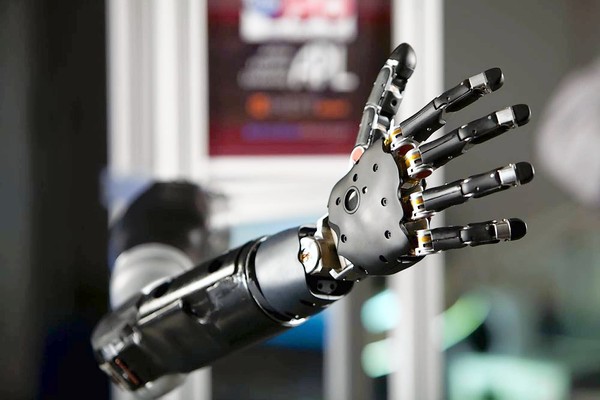Prosthetic arms are artificial devices that are utilized to approximate the appearance and function of a natural hand. While many models have limited mobility, advances in technology have made it possible to create a prosthetic arm that is capable of gripping objects, holding pencils, and even moving in a natural manner with the wrist and forearm.
Over the years, prosthetics have made it possible to develop artificial limbs that not only restore some degree of function for amputees but also resemble natural limbs more closely than before. This is especially true of the prosthetic arm. Earlier models were sometimes simple metallic designs that did not include individual digits. Instead, the hand was characterized by a claw-like design that made it possible to grip objects, but offered little more in the way of functionality. Models of this type were entirely functional, with no attempt to provide even a slight resemblance to a human hand.
Today, there are many prosthetic hand designs that offer a wider range of mobility and also provide a more natural appearance. Thanks to advancements with resins and other synthetic materials, it is now possible to cover the body of artificial hands with what appears to be human skin. Computer technology has also rendered the bulkier hydraulics of past decades obsolete, allowing the prosthetic hand to be contoured into a shape that is much more lifelike. Many models today are equipped with sensors that make it possible to establish a rudimentary biological connection with the wearer, a feature that can often help provide more effective control over the device.
The difference between other prosthetic arm and the prosthetic arm that is undergoes the DARPA’s research, is that DARPA’s prosthetic arm re-attaching existing nerves in the amputee’s upper limb to bands of muscles in the chest, which serve as surrogate controllers for moving the artificial limb. After the replanted nerves have innervated the chest muscles, thinking about arm and hand movements causes these muscles to contract. A myoelectric sensor detects the contractions and sends the signals to an amplifier and digital signal processor, which in turn sends command signals to the artificial arm and hand. Unlike direct brain neural interfaces, the prosthetic connects with nerves in the patient’s limb, therefore requiring less serious and less risky surgery.
It doesn't require any visual information to operate, allowing the wearer to control it without maintaining visual contact. This makes "blind" tasks, like rummaging through a bag, much easier.
A flat interface nerve electrode (Fine) provides direct sensory feedback to the patient. Fine is a way of hacking into the body's nervous system by flattening a nerve. This exposes more of the nerve to electrical contact, making it easier to interface with it. Researchers at Case Western Reserve University, involved with the touch-sensitive prosthetic, previously used Fine to reactivate paralyzed limbs.
How does it work? After a limb is amputated, the nerves still work as they once did—they just don’t lead anywhere anymore. So, soon after the amputation, doctors surgically reattach severed nerve endings to different muscles in the arm. Using a type of neural connection called targeted muscle re-innervation (TMR), the nerves can be re-wiring from amputated limbs to the prosthetic arms, so, when the wearer thinks of moving his hand, elbow, or wrist, the old nerve groups works as it used to be. Now, however, they contract these new muscles. A computer learns to recognize various muscle contraction patterns as commands for particular movements of the prosthetic—‘turn wrist’, ‘close hand’, or ‘bend elbow’ .
The greatest benefit of this newly developed prosthetic arm is that, it gives hope to human with disabilities. In neuroscience, this DARPA’s Prosthetic Arm is set to take over a real arm, letting the receiver control it with their thoughts, fired up with brain cells. This is a better alternative to prosthetic arms in function and for them to regain motoric skills and subsequently independence.
Name : Hans Chandra
Lecturer Name : Aditya Pratomo
Campus : Surya University
http://www.darpa.mil/our_work/dso/programs/revolutionizing_prosthetics.aspx
http://www.neurotechreports.com/pages/darpaprosthetics.html
http://singularityhub.com/2013/07/24/darpas-brain-controlled-prosthetic-arm-and-a-bionic-hand-that-can-touch/
http://www.wired.co.uk/news/archive/2013-05/31/darpa-touch-sensitive-prosthetic


No comments:
Post a Comment